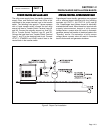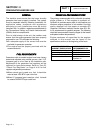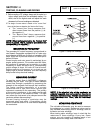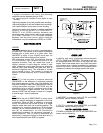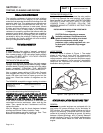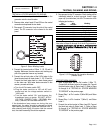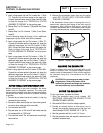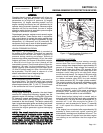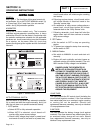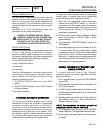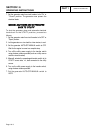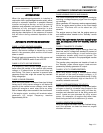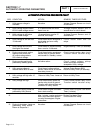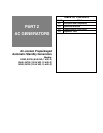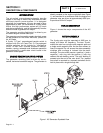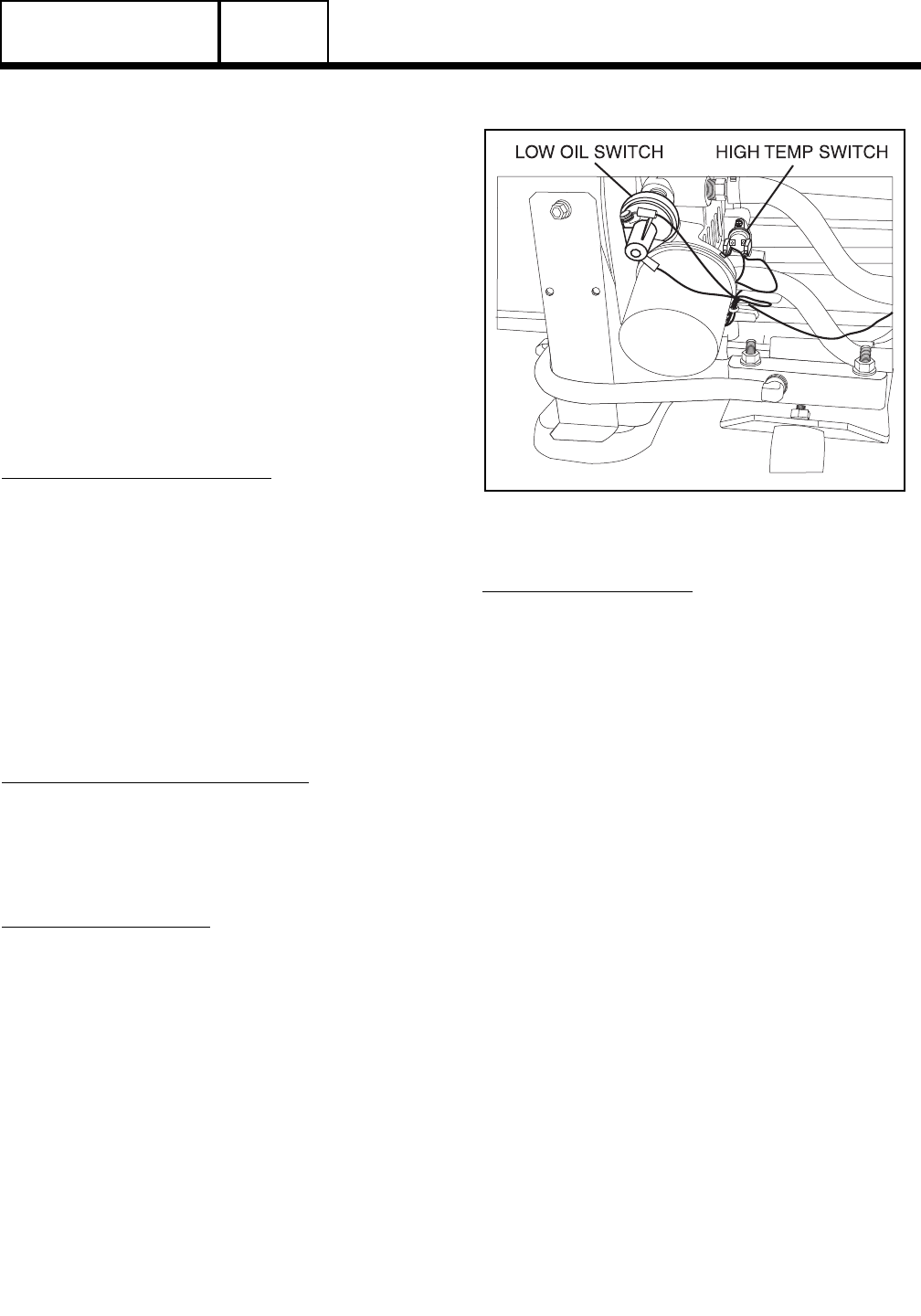
SECTION 1.5
ENGINE-GENERATOR PROTECTIVE DEVICES
GENERAL INFORMATION
GENERAL
Standby electric power generators will often run
unattended for long periods of time. Such operating
parameters as (a) engine oil pressure, (b) engine
temperature, (c) engine operating speed, and (d)
engine cranking and startup are not monitored by an
operator during automatic operation. Because engine
operation will not be monitored, the use of engine
protective safety devices is required to prevent engine
damage in the event of a problem.
Prepackaged generator engines mount several engine
protective devices. These devices work in conjunction
with a circuit board, to protect the engine against such
operating faults as (a) low engine oil pressure, (b) high
temperature, (c) overspeed, and (d) overcrank. On
occurrence of any one or more of those operating faults,
circuit board action will effect an engine shutdown.
LOW OIL PRESSURE SHUTDOWN:
See Figure 1. An oil pressure switch is mounted on
the engine oil filter adapter. This switch has normally
closed contacts that are held open by engine oil
pressure during cranking and startup. Should oil
pressure drop below approximately 10 psi, the switch
contacts will close. On closure of the switch contacts,
a Wire 86 circuit from the circuit board will be
connected to ground. Circuit board action will then de-
energize a "run relay" (on the circuit board). The run
relay’s normally open contacts will then open and a
12 volts DC power supply to a Wire 14 circuit will then
be terminated. This will result in closure of a fuel
shutoff solenoid and loss of engine ignition.
HIGH OIL TEMPERATURE SHUTDOWN:
An oil temperature switch (Figure 1) is mounted on
the engine block. The thermal switch has normally
open contacts that will close if oil temperature should
exceed approximately 284 F (140 C). This will result
in the same action as a low oil pressure shutdown.
OVERSPEED SHUTDOWN:
During engine cranking and operation, the circuit board
receives AC voltage and frequency signals from the
generator engine run windings, via Wire 66A. Should the
AC frequency exceed approximately 72Hz (4320 rpm),
circuit board action will de-energize a "run relay"
(mounted on the circuit board). The relay’s contacts will
open, to terminate engine ignition and close a fuel shutoff
solenoid. The engine will then shut down. This feature
protects the engine-generator against damaging
overspeeds.
NOTE:
The
circuit
board
also
uses
engine
run
winding
output
to
terminate
engine
cranking
at
approximately
30
Hz
(1800
rpm).
In
addition,
the
engine
run
winding
output
is
used
by
the
circuit
board
as
an
"engine
running"
signal
The
circuit
board
will
not
initiate
transfer
of
electrical
loads
to
the
"Standby"
source
unless
the
engine
is
running
at
30
Hz
or
above.
Figure 1. Engine Protective Switches on an
Air-Cooled Engine
OVERCRANK SHUTDOWN:
Automatic engine cranking and startup normally
occurs when the circuit board senses that utility
source voltage has dropped below approximately 60
percent of its nominal rated voltage and remains at
that low level longer than fifteen (15) seconds. At the
end of fifteen (15) seconds, circuit board action will
energize a crank relay and a run relay (both relays
are on the circuit board). On closure of the crank relay
contacts, circuit board action will deliver 12 volts DC
to a starter contactor relay (SCR, for v-twin models)
or a starter contactor (SC, for single cylinder models).
The control contactor will energize and battery power
will be delivered to the starter motor (SM). The engine
will then crank.
During a manual startup (AUTO-OFF-MANUAL
switch at MANUAL), action is the same as during an
automatic start, except that cranking will begin
immediately when the switch is set to MANUAL.
Circuit board action (during both a manual and an
automatic start) will hold the crank relay energized for
15 seconds on. The relay will then de-energize for 15
seconds off. It will then energize for seven (7)
seconds on and de-energize for seven (7) seconds
off. It will repeat this same cycle for another 45
seconds.
If the engine has not started after approximately 90
seconds of these crank-rest cycles, cranking will
automatically terminate and shutdown will occur. The
circuit board uses AC signals from the stator engine
run winding as an indication that the engine has
started.
PART 1
Page 1.5-1



